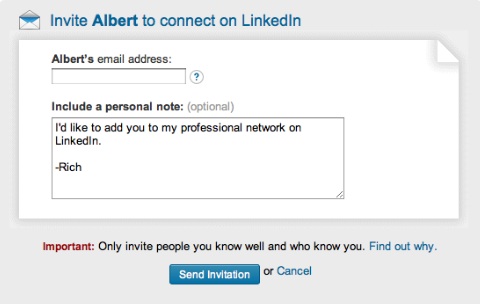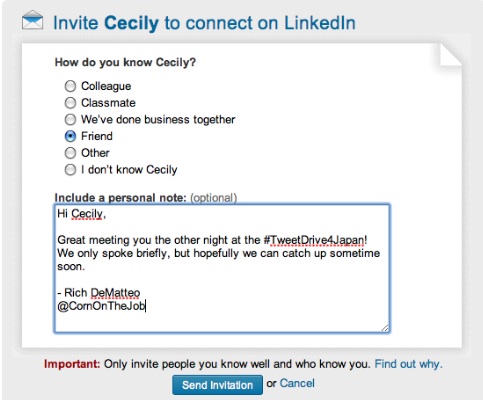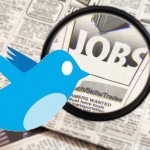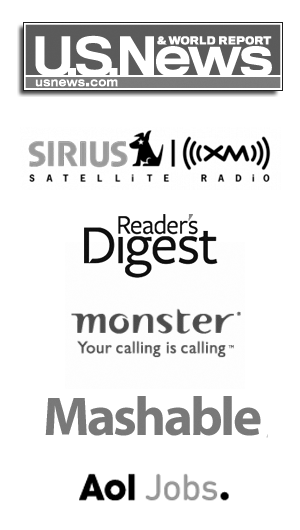I’m about to unleash the greatest Beginners Guide to Linkedin EVER created! The holidays are over, so consider this your late present from Cornz.
There is a ton of information here, so set aside some time, read the guide, and then fire me any questions you may have.
Why use Linkedin?
I really could answer this with one critical bullet point, but here are a few:
- 85% of recruiters go to Linkedin before anywhere else to find talent.
- Build, organize, and manage your online recommendations from folks you’ve had professional relationships with.
- Easily connect with industry professionals that have careers of interest to you or goals similar to yours.
- Connections = Jobs
Can’t stress how insane that first bullet point is. Even if a recruiter doesn’t find you on Linkedin, when you’re in the running for a position, they’ll search you out on Linkedin and be very upset if you’re absent. What’s your excuse? Sorry, “My Dog ate my Linkedin” just won’t work.
Profile Creation
The initial profile creation is incredibly easy. For the most part, you’ll want your Linkedin profile to match your resume. With that said, have you ever felt constricted to preconceived page requirements on a resume? Yeah, well on Linkedin feel free to stretch it a bit. This doesn’t mean to toss any old bullshit on your profile, but DEFINITELY add in all of your college activities and leadership opportunities, instead of the one or two you put on the resume.
As you go through and complete the profile, you’ll see a percentage amount that shows how complete your profile is. Work hard to get to 100%. Once you are there, you’ll be found a ton more by recruiters and your profile will look much more professional.
Picture
Think professional. Think headshot. Crop one of your Facebook profile images to just include from your shoulders up to your head. Keep your friends, animals, and loved ones out of it. Just you. Just smiling and happy you.
Headline
When a recruiter conducts a search on Linkedin, they’ll see a list of names, including a professional headline for each person. This is a short sentence with key words that gives the recruiter a reason to click and read further. Your professional headline could look like this:
Marketing Intern at COMPANY. Graduating in 2011 from SCHOOL with a Degree in Marketing
It can be much more dynamic than that. Here’s mine:
How to Connect With Someone (the right and wrong way)
When connecting with someone on Linkedin, it asks you to pick out how you know this person. The options are Colleague, Classmate, We’ve done business together, Friend, and other. Once you identify how you know them, you’ll then see an automated message come up that will be sent…unless you change it!
Now this part is important.
Never! Never! Never! Never keep this automated message. Change it up, add some spice, add some character and give them a reason to want to connect. If you really don’t know the person, but you realize they are influential for you, then intrigue them a bit and they’ll want to add you to their network.
This is what the awful automated message looks like:
That’s the wrong way to send a connection request. Ew. Albert isn’t going to want to connect with you and I don’t blame him.
As I mentioned previously, add some spice to your connect request. Tell them exactly where you met or how you know them or why you want to connect. So many people send me amazing connection messages about #JobHuntChat or Corn on the Job. I may not know them personally, but they just complimented me and showed me why they are interested in connecting. I always accept their request and make it a point to send them a message back. Most people will react the same way.
Here’s an example of a perfect way to connect with someone!
Groups
Groups are a fantastic way to make KEY connections with influential people. Join local and national groups that are related to your target industry or exact profession. Groups offer news articles, blog posts, related discussions, and also jobs. Yep, that’s right. Many groups now have jobs posted for that specific field of interest.
If that’s not enough, you can easily connect with any member of the group and add them to your professional connections. Contact these folks and feel free to ask them questions about their job or company, and possibly even offer to take them out for lunch or coffee to learn more about what they do. It may be time consuming to go through and add a ton of group members to your connections list, but think about it. If you add just 10 a week, you’ll have 80 influential connections in just 2 months. Do it!
How many groups can you join? 50. So go ahead, join 50!
Recommendations
Recommendations are a great addition to your profile. Just like a resume, they shouldn’t just be forced information. When you’ve done something that you feel was really kick ass, ask the person or people you were working with to leave you a short recommendation on Linkedin. Who should leave recommendations?
- Supervisors
- Co-workers
- Clients
- College Professors
- Classmates you’ve worked on projects with
- Anyone you’ve had a professional relationship with
Your recommendations should paint a picture and help you make it to where you want to be. For instance, let’s say you’re really looking interested in moving into a PR role, but most of your experience has been as a Marketing Coordinator. Some of your projects may have touched on PR, so you obviously worked with PR professionals on those projects. Ask for recommendations from PR folks you worked with, and use these recommendations to your advantage when looking for your PR job. Feel free to even toss them on the resume!
Follow Interesting Companies
Following companies on Linkedin is a stalkers dream come true. Seriously guys…holy shit. This is just some of the information you’ll get when you follow a company:
- Company employees in your network. Yes, it instantly shows who from your network works at that company now.
- New hires at the company. Do you understand the power here? Look at the type of people they are hiring, and mimic their style a bit. Connect with these guys and gals and ask them what their experience has been like as a new hire.
- All company employees. Yep, if an employee of that company has Linkedin, then they will be listed here.
- Latest Tweets.
- Recent blog posts.
- Recently posted jobs. Bingo!
- Recent company activity.
It’s all there. Just about everything you need.
Search Jobs on Linkedin
I know what you’re thinking. You’re wondering why I didn’t toss this one up a little earlier in the guide. My reason is simple. You can’t look for jobs on Linkedin until your profile is looking spiffy. Once you’re ready to show off your profile, then it’s time to rock and start searching job postings right on Linkedin. Remember, a poor profile could possibly hurt you, so make sure it’s looking slick before you search jobs.
Right up top you’ll see that you can click on “Jobs”. Hover over it and click on “Find Jobs”. Now, the cool thing is that right away Linkedin will highlight jobs that you might be interested. They search your profile for keywords and send you some suggestions. That’s a great way to start, or you can go right in and search keywords and specific locations for jobs.
Alright, so here’s the cool part. Once you click on a job description that seems interesting, you’ll find a ton of helpful tools. Along with a job description, you’ll also see who posted it, who from your network is somehow connected to the person that posted the job, and who from your network works there. This is the bomb. Just… It’s the bomb.
Update Status Often
Maybe not as often as Twitter or Facebook, but try to update your status on Linkedin a couple times a day. The more you update, the more likelihood that your status will appear in email updates out to your network. Keep your updates professional, with actual updates to your professional career. Linkedin can get very social, and you’ll be surprised to see how a simple update can bring some good back to you.
COTJ’s Final Words
Linkedin may seem a little overwhelming at first, but it’s like any other social media channel. Once you get used to it and start to grow a network, it will spiral out of control and you’ll become addicted. Twenty connections will lead to fifty, and one hundred will lead to two hundred. These connections will be invaluable to your career now, and even more valuable to you in the future.











